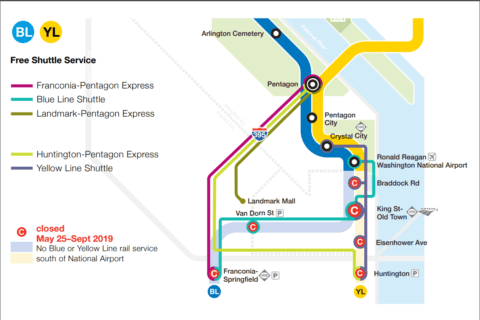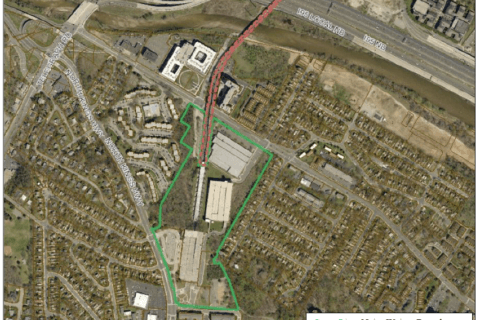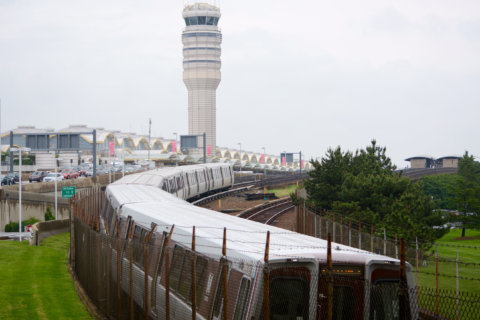Extra traffic during the Metro shutdown is likely more than just your imagination.
Metro data suggest about half of the typical ridership at the six closed stations south of Reagan National Airport found some other way to get around rather than taking shuttle buses in the first week of the closures.
Though regional efforts to quantify the exact traffic impacts will take more time, in Alexandria, the city found heavier traffic on the roads in the first week. The city found it was hard to be sure whether that was due to the Metro shutdown or other more typical problems, such as weather and crashes.
Research on previous round-the-clock shutdown zones found traffic delays increased even during shorter Metro closures.
The lines for Metro shuttle buses and the extra time sitting in traffic added significant time to commutes for people sticking with Metro service, too, with Metro noting a higher number of rail entries between 8:30 a.m. and 9 a.m. than usual just north of the shutdown area, but a lower than usual number between 7 a.m. and 8 a.m.
Less than 40% of riders are still taking the train from Reagan National, Crystal City, Pentagon City or Pentagon (although some more might typically end their trips at those stations, so would not need to board the train). Each of those station platforms was more crowded than usual in the first week of the closure, but Metro said the actual trains are not overcrowded.
A number of shuttle bus riders have also complained about a handful of drivers getting lost, long waits for buses sometimes, and a lack of information about when exactly buses will arrive. Initial confusion about bus locations appears to be getting sorted out somewhat.
During past shutdowns, the first week included a lot of experimentation from riders who may have later been able to find a routine that was least disruptive for them.
Revised Metro estimates put shuttle bus ridership at around 30,000 trips per weekday when combining all five free shuttle routes.
However, Metro cannot track the shuttle bus ridership in its usual ways since it contracted out most of the operations.
Estimates provided earlier in the week before an update late Thursday night put shuttle bus ridership between 21,000 and 27,000 trips per day, rather than the revised 26,000 to 34,000 trips. The lower number would mean more than half of riders were driving alone, taking other bus routes or using other modes of commuting besides the free shuttles.
The closed stations typically have around 57,000 trips per day, Metro said.
Other regular bus routes in the area have seen ridership boosts, ranging from a few percentage points for some routes to nearly doubled paid ridership on the 11Y in and out of D.C., now that Metro has added some extra service.
VRE has also seen ridership increases, even after a recent spate of significant delays due to a variety of issues.
More people are also biking in and through Alexandria, and more than 2,200 people rode the Water Taxi between Alexandria and The Wharf in D.C. during the first week of the shutdown.







